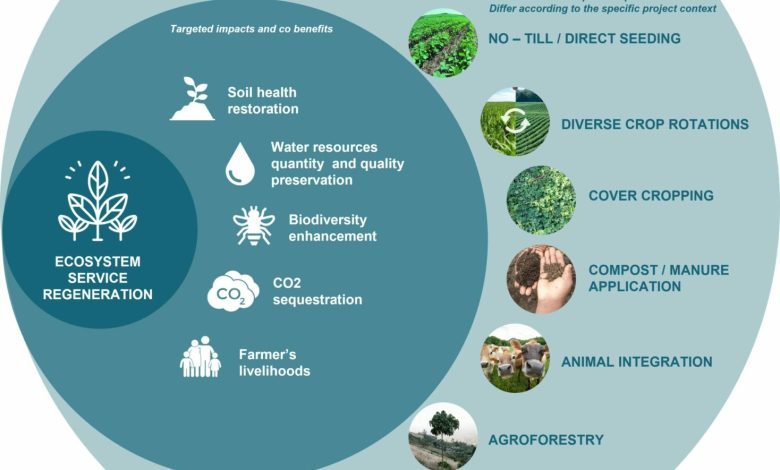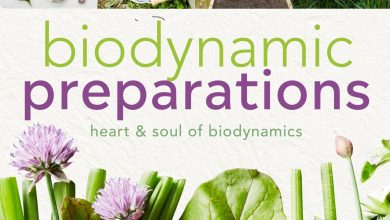What is Regenerative Agriculture: Everything you need to know

After talking to you in other articles about agroecological currents such as Natural Agriculture, Permaculture or Biodynamic Agriculture, in this post I will tell you the bases of another type of agriculture very similar to these. It is less known, but no less interesting for that, I will talk about Regenerative Agriculture.

The philosophy of this agrarian technique is the same as that of the other currents: regenerate and conserve resources by collaborating with nature, considering it as a living and also spiritual entity and without «fighting» against it with aggressive methods such as tillage that turns the soil or chemicals.
How did regenerative agriculture come about?
Philosophers and teachers of the work of the land affirm that taking care of the earth and regenerating it also helps us to nourish our soul, to regenerate it, to be better people for society.
Studying and delving into this type of thinking, the Australian Darren Doherty, who had grown up on a Permaculture farm and dedicated himself to teaching it, traveled the world meeting families and farmers who lived practicing Permaculture.
So he was soaking up this emerging knowledge even more and creating this way of working which he called Regenerative Agriculture, with some new practices but which is, in essence, an update of Permaculture, another way of calling this type of agriculture with the in order to eliminate prejudices and negative connotations linked to this concept.
Principles of Regenerative Agriculture
Regenerative Agriculture is a way of life, a philosophy of life aimed at the regeneration of nature and society through the care and conservation of the «health» of the soil.
The soil is a key element for agriculture, and agriculture and food, in turn, are basic to our survival, so caring for the soil is a way of regenerating the ecosystem, the landscape and also our lives.
The typical practices of conventional agriculture (artificial fertilizers, herbicides, insecticides…) try to maintain the fertility of the soil, but in reality what they do is «deplete» it, reduce its health and fertility… In this way, even greater quantities of these products, which makes the soil worse and more artificial fertilizers are needed.
It is a wheel that feeds itself in a negative way and that causes the costs to produce food to constantly increase due to the increasing dependence on the use of these products. In this way, unfortunately, being a farmer is less and less profitable because, due to the poor state of the soil, the costs to produce food are increasing but what is perceived for them does not increase in the same way. This is what Regenerative Agriculture tries to solve.
What are the bases of regenerative agriculture?
The basis of Regenerative Agriculture is to imitate nature, act as she does to maintain a rich and fertile soil, without using products that give «everything» to plants, avoiding natural processes, without using fertilizers, insecticides and fungicides that end up with soil biodiversity and also without changing its structure by turning it over or inverting the soil layers.
Because with this what we are achieving is making the plant weaker, more «lazy», less resistant to diseases and pests and… of course, filling it with products that are harmful to health that we will later eat… What we have to do is « feed the life of the soil», the microorganisms that make it fertile and healthy, through actions that protect it, that protect its structure and that maintain it as it really is by nature.
More about Regenerative Agriculture
If you want to know more about this topic in the following post you can find a summary of the main practices and techniques of Regenerative Agriculture.
Here you have a very interesting video that summarizes the bases of this way of doing agriculture:
I also recommend that you take a look at the conferences, interviews and publications by Ana Digón, coordinator of the Iberian Network for Regenerative Agriculture, and an expert in the field.
If anyone is starting to practice Regenerative Agriculture or has been doing it for years, it would be great if you could tell us about your experience in the comments, to learn a little more about the subject.

![Photo of Begonias Care: [Earth, Strengthening, Humidity and Pruning]](https://www.complete-gardening.com/wp-content/uploads/2022/08/begonias-care-earth-strengthening-humidity-and-pruning-390x220.jpg)

![Photo of Red Chicory: [Characteristics, Cultivation, Care and Disadvantages]](https://www.complete-gardening.com/wp-content/uploads/2022/08/red-chicory-characteristics-cultivation-care-and-disadvantages-390x220.jpg)
